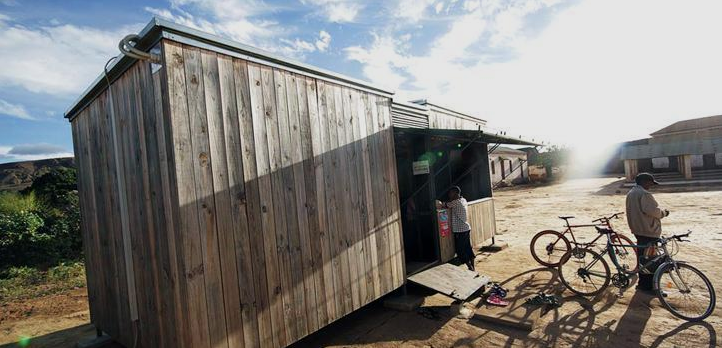
Lenders on the Kiva platform have funded over $1.6 billion in loans to small business owners and other underbanked borrowers around the world since 2005.
Employee interaction and engagement can be difficult enough when everyone works in the same building. Factor in the shift to remote work and the challenges of the past two years, and it can feel like connecting with colleagues is a thing of the past — leaving many business leaders looking for new ways to bring everyone together.
BMC Software, for example, launched a set of Employee Resource Groups (ERGs) in 2021 to empower, celebrate, support and advocate for employees, their unique cultures, and their communities. Members of each ERG are united by shared experiences or interests, including: Abilities, Asian & Pacific Islander, Black @ BMC, Caregivers, Interfaith, LatinE, One Earth, Pride, Veterans, and Women in Technology and Business.
When BMC Software’s corporate social responsibility team, led by Wendy Rentschler, created the ERGs, they knew they needed to develop tangible ways for group members to get involved and make meaningful change in their areas of interest. This was especially challenging as volunteer projects were still highly segmented and hard to come by due to the pandemic. Instead, BMC Software’s corporate social responsibility (CSR) team provided each of the 10 groups funds to invest with Kiva, an online platform that has funded over $1.7 billion in microloans to underbanked borrowers across 76 countries since 2005.
“One of the best ways to create equity is through economic empowerment, and each of our ERGs participates in microlending through Kiva,” Rentschler explained on BMC Software’s “Business of IT" blog.
Building equity through economic empowerment
For those who may be unfamiliar, Kiva is a nonprofit that creates economic opportunities for individuals, entrepreneurs, and small business owners around the world through microlending.
Borrowers can apply to Kiva for a loan to start a business, continue education, upgrade farming or manufacturing equipment, cover emergency expenses and more. Investors — individual lenders or groups such as BMC Software’s ERGs — can search for and contribute to loans they’d like to help fund, based on factors like geographic location or type of business. Once loans are funded, more than 96 percent of Kiva borrowers ultimately repay lenders— allowing users to reinvest those funds into another loan on the platform, furthering the monetary impact and expanding financial inclusion.
As BMC Software’s ERG meetings are held remotely, all employees have the ability to participate and help decide which Kiva initiatives to invest in based on how the opportunities relate to their shared backgrounds. The LatinE ERG, for example, has funded loans in 10 countries in Central and South America, while the Pride ERG has invested in LGBTQIA+ initiatives.

Tackling sustainability challenges
Mark McDermott is director of global real estate and facilities at BMC Software’s Houston-based headquarters. He started microlending with Kiva in 2009 through his previous employer. Five years later, he began volunteering to proofread loan profiles as a Kiva editor. This experience gave McDermott a “behind-the-scenes” glimpse of how loans went from application to funding to repayment, a perspective that helps him today as co-captain of BMC’s One Earth ERG.
One Earth is the company’s largest ERG, centering on sustainability and environmental issues. While each ERG has a slightly different process of choosing which Kiva loans to fund, One Earth tends to focus on one environmental challenge at a time and select loans that best address it, McDermott said.
For example, fast fashion is a big area of discussion and concern for One Earth members, so for a time the team focused on backing businesses that resell or recycle secondhand clothing. Other recent One Earth loans went toward projects involving sanitation and renewable energy — including Heri-Go, which provides home solar systems through a network of energy kiosks managed by women entrepreneurs in rural Madagascar (pictured above).
“The loan we helped fund provided solar energy systems for more than 1,000 homes,” McDermott told us. “Its aim fits perfectly with what our Employee Resource Group stands for: The project was managed by women entrepreneurs, provided clean energy, was located in Madagascar, and touches upon many of the interests of BMC’s various ERGs.”
Microlending as an incentive
Christina Chao, Kiva’s senior director of strategic partnerships, works with companies of all sizes to help implement microlending engagement initiatives. “You can participate with five employees or with 50,000 employees,” she told us. “Companies can use microloans in conjunction with employee resource groups, as in the case of BMC Software, or they can be part of a company-wide strategy. In fact, we even see friendly rivalries develop among different office locations or departments within a company, or even between companies.”
Unlike traditional corporate giving programs, companies aren’t just making donations with Kiva — they’re also making investments — and employees aren’t the only ones benefiting. Chao said she’s seen many organizations engage customers by giving Kiva credit as an incentive. “Not only does this help borrowers whose loans can be funded by the credits, but it also helps the companies strengthen their corporate responsibility and sustainability initiatives.”
She went on to share an experience of meeting a borrower, Vicky, in Uganda who wanted to start a vegetable farm to send her children to school and lit up with confidence when Chao showed her the list of lenders from around the world who had signed up to support her. For McDermott, it isn’t only the support borrowers gain from investors that has had the most meaning for him over the past year, but also the support employees find in each other by coming together around a shared cause.
“The One Earth ERG has definitely helped strengthen the connections among business units,” McDermott said. “Together, you feel like you have a bigger impact than just punching a clock. You are making a real difference.”
This article series is sponsored by BMC Software and produced by the TriplePundit editorial team.
Images courtesy of Kiva

Megan is a writer and editor interested in sharing stories of positive change and resilience. She is the author of Show Up and Bring Coffee, a book highlighting how to support friends who are parents of disabled children. You can follow her at JoyfulBraveAwesome.com.














